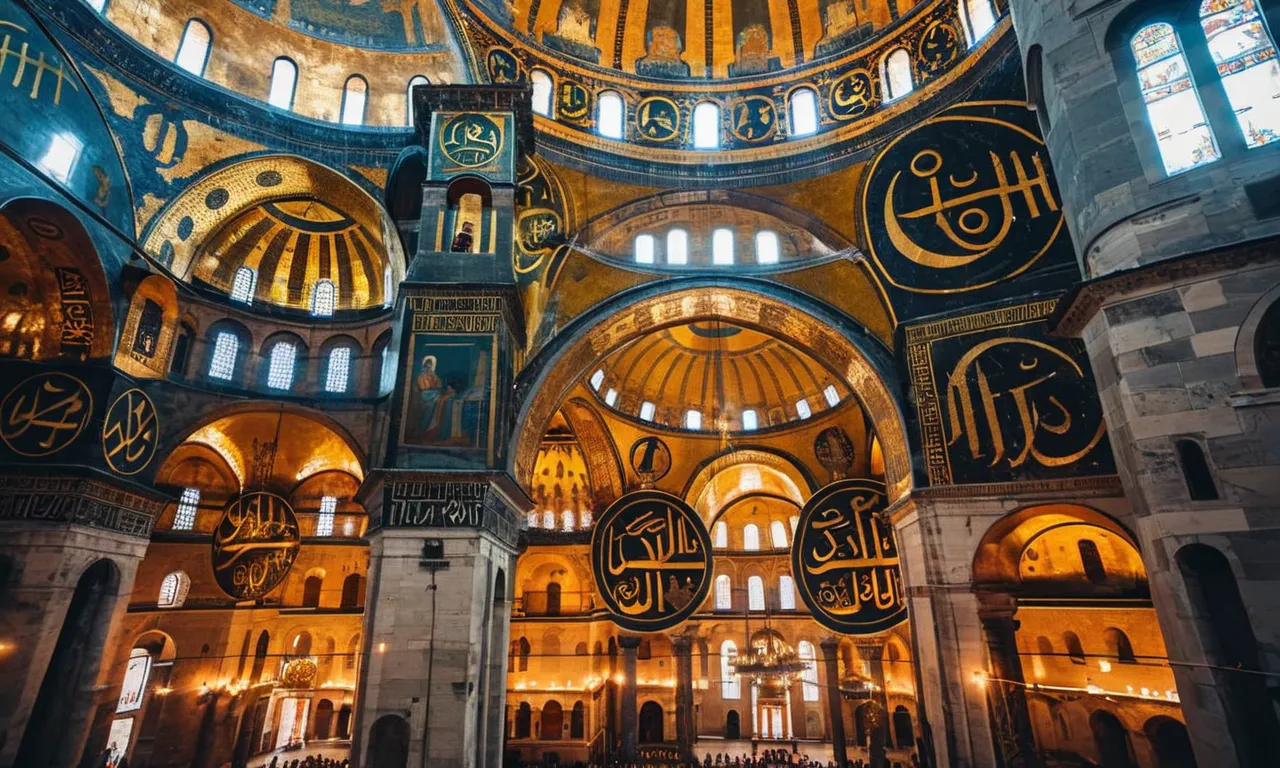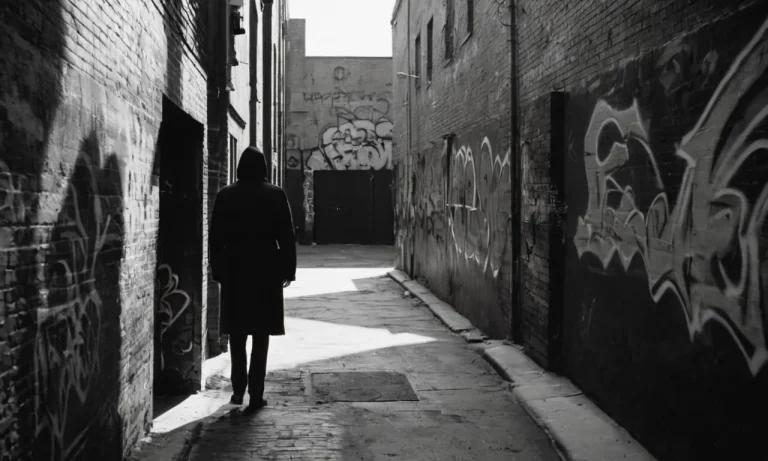What Church Was Found In The Byzantine Empire?
The Byzantine Empire, also known as the Eastern Roman Empire, was a continuation of the Roman Empire in its eastern provinces during Late Antiquity and the Middle Ages. Its capital city was Constantinople (modern-day Istanbul), originally founded as Byzantium.
The Byzantine Empire was known for its strong Christian identity tied to the Eastern Orthodox Church.
If you’re short on time, here’s the quick answer to what church was found in the Byzantine Empire: The prevailing and politically powerful church was the Eastern Orthodox Church, though smaller Christian sects existed in the empire as well.
The Eastern Orthodox Church Dominated the Byzantine Empire
Close Ties Between Church and Imperial Leaders
The Byzantine Empire was dominated by the Eastern Orthodox Church, which had very close ties to the imperial rulers. The emperor was considered God’s representative on earth and had authority over the Church.
At the same time, the Church provided legitimacy for imperial rule and gave blessings for imperial conquests. This close relationship was known as Caesaro-Papism.
Several Byzantine emperors actively intervened in Church affairs, calling and presiding over Church councils, appointing or deposing patriarchs and bishops, and enforcing orthodoxy. For example, Emperor Justinian called the Second Council of Constantinople in 553 CE to condemn certain Nestorian teachings.
Emperor Leo III issued decrees against icons in the 8th century, leading to the Iconoclasm controversy. Overall, the imperial leadership maintained firm control over the Eastern Orthodox Church.
Mandated Orthodoxy and Suppression of Other Sects
The Eastern Orthodox Church was intolerant of any deviations from orthodoxy. Heresies like Monophysitism, Monothelitism, and Iconoclasm were condemned. The Paulicians and Bogomils, seen as heretical Gnostic sects, were actively suppressed.
Jews and Pagans faced restrictions and pressure to convert in the Byzantine Empire. In the 6th century, Emperor Justinian closed the Academy in Athens, ending the teaching of pagan Hellenistic philosophy. The empire also suppressed Manichaeism, a gnostic religion deemed heretical.
Overall, religious uniformity and orthodoxy were stringently enforced, limiting religious diversity in the Byzantine world.
According to historians, this religious control and rigidity contributed to the empire’s eventual downfall, as it lost flexibility and alienated large segments of the population. However, in its heyday, the Eastern Orthodox Church gave spiritual meaning, identity and authority to the Byzantine Empire for centuries.
Notable Bishops and Church Figures
Patriarch Photios I of Constantinople
Patriarch Photios I was one of the most learned men of his time and had a profound influence on the Byzantine Church. As Patriarch of Constantinople, he defended the autonomy of the Eastern Church against papal claims of supremacy.
This led to the Photian Schism with Rome, which lasted several years until Photios was deposed.
Photios is remembered for his vigorous defense of Orthodox theology against heresies. He openly challenged the filioque clause inserted into the Nicene Creed by the Western Church, which stated that the Holy Spirit proceeds from both the Father “and the Son” (filioque in Latin).
The Orthodox Church taught that the Spirit proceeds only from the Father.
Gregory Palamas and Hesychasm
Gregory Palamas (1296-1359) was an Orthodox monk and theologian who defended the Byzantine practice of hesychasm – a mystical tradition that involved the repetition of the Jesus Prayer while controlling one’s breathing to achieve an inner stillness and mystical union with God.
The hesychast monks believed that through their ascetic practices, they could see the “uncreated light” that the Apostles witnessed at the Transfiguration of Christ on Mount Tabor. Gregory argued that the hesychasts did indeed experience the divine energies of God while God’s essence remains unknowable.
Emperor Justinian and his Religious Policies
The reign of Emperor Justinian I (527-565) marked an important epoch in the development of the Byzantine Church. Justinian promoted an imperial role over the governance of the Church. He convened the Fifth Ecumenical Council at Constantinople in 553, which condemned various heresies.
Justinian constructed the magnificent cathedral of Hagia Sophia (“Holy Wisdom”) in Constantinople, which stood for almost a thousand years as the largest cathedral in the Christian world until the Ottoman conquest of 1453.
He also commissioned a systematic compilation and reform of Roman law known as Corpus Juris Civilis (Body of Civil Law), which had lasting influence.
Lesser Christian Sects Within the Empire
Miaphysites/Monophysites
The Miaphysites, also known as Monophysites, were Christians in the Byzantine Empire who believed that Christ had only one unified divine nature, as opposed to the orthodox belief that Christ had two natures, one divine and one human.
The Miaphysite view originated with Eutyches, a 5th century Byzantine monk, and was condemned as heretical by the Council of Chalcedon in 451. However, it continued to have many adherents, especially in Egypt and Syria where it was endorsed by the national churches.
Miaphysitism remains the primary Christology of Oriental Orthodox churches today, including the Coptic, Ethiopian, Eritrean, Syrian, and Armenian Apostolic churches.
Despite imperial persecution, Miaphysitism retained strongholds in Syria and Egypt. Emperor Justinian I tried to reconcile them with Chalcedonian Christianity through compromise formulas in the 530s, but this effort ultimately failed.
Later emperors and church officials occasionally attempted rapprochement with the Miaphysites but could not come to final agreement. Nevertheless, the Miaphysite churches managed to survive and maintain their distinctive identities within the empire.
Nestorians
The Nestorians were Christians in the Byzantine Empire who followed the teachings of Nestorius, Patriarch of Constantinople from 428 to 431. Nestorius stressed the disunity between the human and divine natures of Christ, in contrast to the orthodox view that Christ’s natures were unified.
The Nestorian view was condemned at the Council of Ephesus in 431 and Nestorius was removed from office. However, his followers relocated to the Sasanian Empire outside the Byzantine borders and founded the Church of the East, or the Nestorian Church.
Under the Sasanians, the Nestorian Church experienced rapid growth, spreading Christianity further east into Persia, India, Mongolia and China. But in the Byzantine Empire, the remaining Nestorians faced periodic persecution for their heretical beliefs. They were branded as dissidents and non-Chalcedonians.
Emperor Zeno attempted to reconcile the Nestorians with Chalcedonian doctrine in the 480s but was unsuccessful. Nestorianism remained stigmatized and existed only on the fringes of the Byzantine Empire thereafter.
Paulicians
The Paulicians were an Adoptionist and Gnostic Christian sect that flourished in Armenia in the 7th-9th centuries, and were bitterly persecuted by the Byzantine Empire. Their name is derived from their reverence for the apostle Paul and their adoption of his letters as central religious texts.
The Paulicians viewed the Old and New Testaments, except for the Pauline epistles, as the work of an evil creator deity.
The sect was founded in the mid-600s by Constantine of Mananali, who began preaching the teachings of an Armenian named Paul to people near Samosata. It spread through Anatolia and Thrace despite initial orthodox opposition and imperial persecution.
Later emperors like Nicephorus I and Michael I instituted brutal campaigns to eradicate the Paulicians, massacring thousands, particularly in the Haemus Mountain region. But the sect continued to subsist and even grew in Bulgaria after further relocations.
Conclusion
In summary, while smaller Christian sects existed within its borders, the predominant church of the Byzantine Empire was the Eastern Orthodox Church. Its theology and leaders were closely intertwined with imperial policy and administration.
Orthodoxy enjoyed a privileged status – while heretical groups faced exclusion and persecution.








